
Question Video The Derivative of an Inverse Tangent Function Nagwa
tan^-1(x) Natural Language; Math Input; Extended Keyboard Examples Upload Random. Compute answers using Wolfram's breakthrough technology & knowledgebase, relied on by millions of students & professionals. For math, science, nutrition, history, geography, engineering, mathematics, linguistics, sports, finance, music…

Differentiation of tanx quotient rule YouTube
Differentiate algebraic and trigonometric equations, rate of change, stationary points, nature, curve sketching, and equation of tangent in Higher Maths.
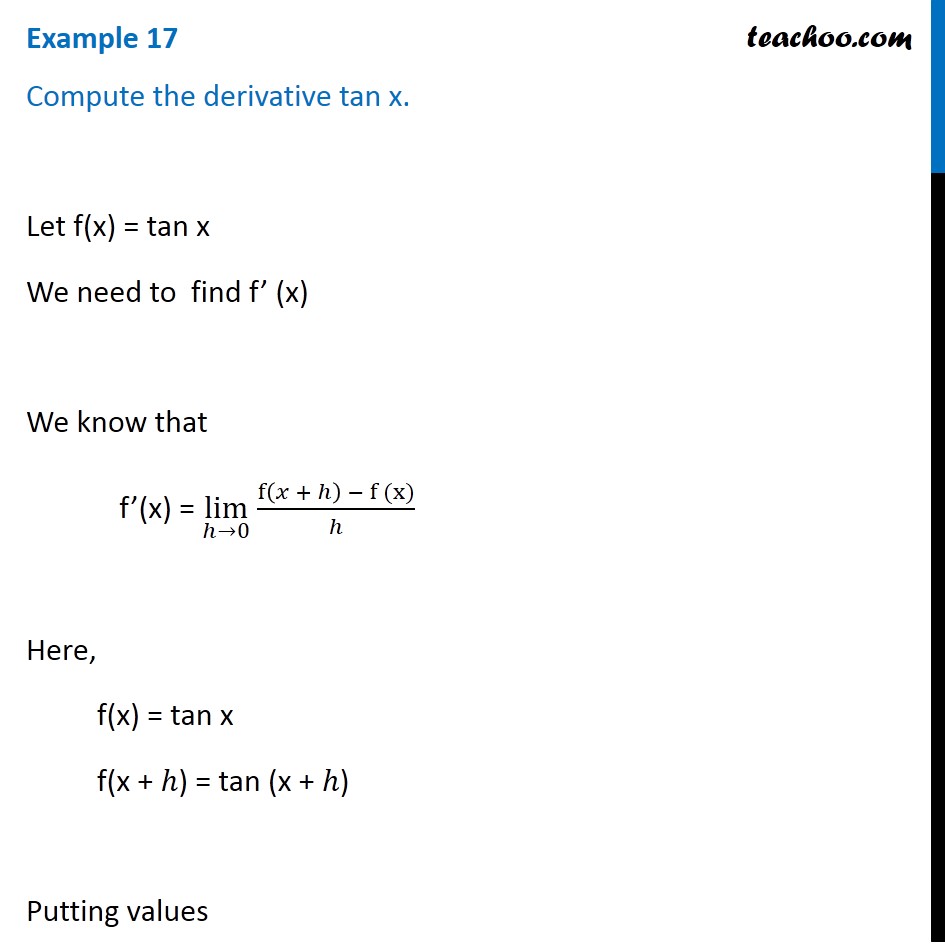
Derivada Tan X Estudiar
Differentiation of tan inverse x is the process of evaluating the derivative of tan inverse x with respect to x which is given by 1/ (1 + x 2 ). The derivative of tan inverse x can be calculated using different methods such as the first principle of derivatives and using implicit differentiation.
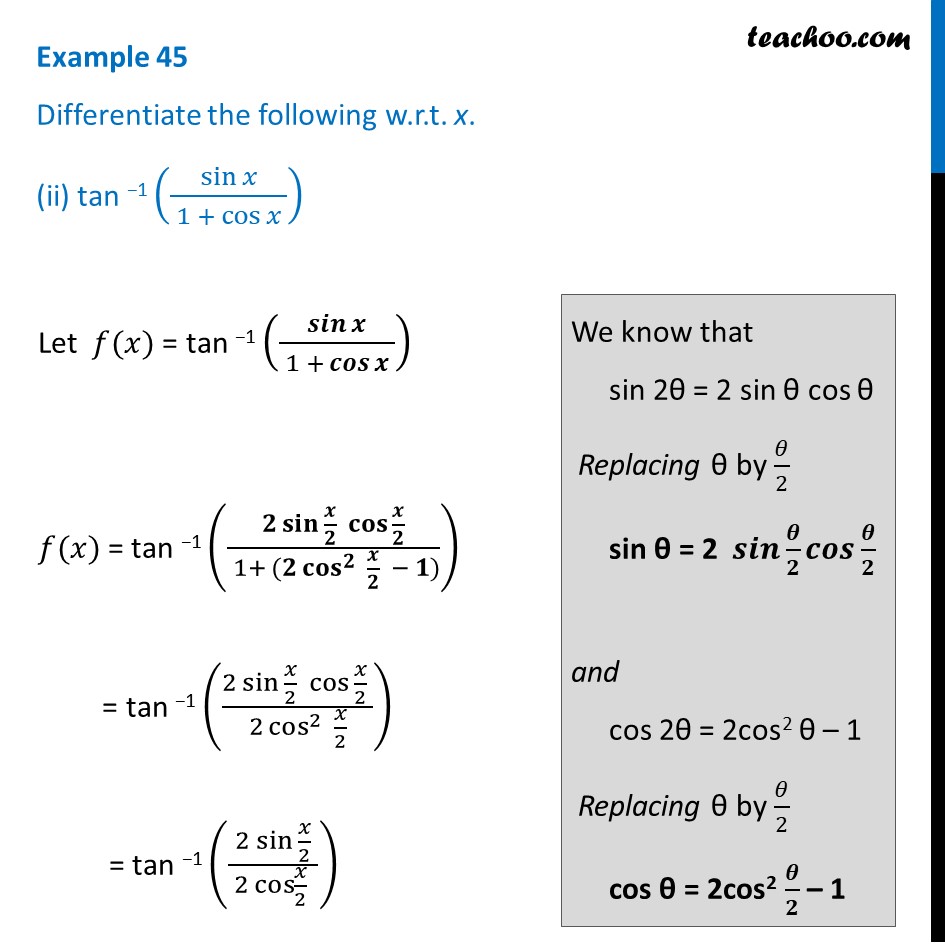
Example 45 (ii) Differentiate tan^1 (sin x/ (1 + cos x)) Teachoo
Derivatives Derivative Applications Limits Integrals Integral Applications Integral Approximation Series ODE Multivariable Calculus Laplace Transform Taylor/Maclaurin Series Fourier. (tan^{-1}x\right) en. Related Symbolab blog posts. Practice Makes Perfect. Learning math takes practice, lots of practice. Just like running, it takes practice.

Differentiation of tan inverse x is ? Brainly.in
Free derivative calculator - differentiate functions with all the steps. Type in any function derivative to get the solution, steps and graph

Find derivative dy/dx of x = tan y. Implicit Differentiation YouTube
1 It boils down to: what do you mean by $\tan^ {-1} (x)$. I think most people think of it as the inverse tangent function, i.e. $\arctan (x)$, but some think of it as $\frac {1} {\tan (x)}$. The derivative of the former is $\frac {1} {1+x^2}$, and the derivative of $\tan (x)$ is $\sec^2 (x)$.

Derivative of Tangent x Formula, Rules, Examples
Symbolab is the best derivative calculator, solving first derivatives, second derivatives, higher order derivatives, derivative at a point, partial derivatives, implicit derivatives, derivatives using definition, and more. Is velocity the first or second derivative? Velocity is the first derivative of the position function.
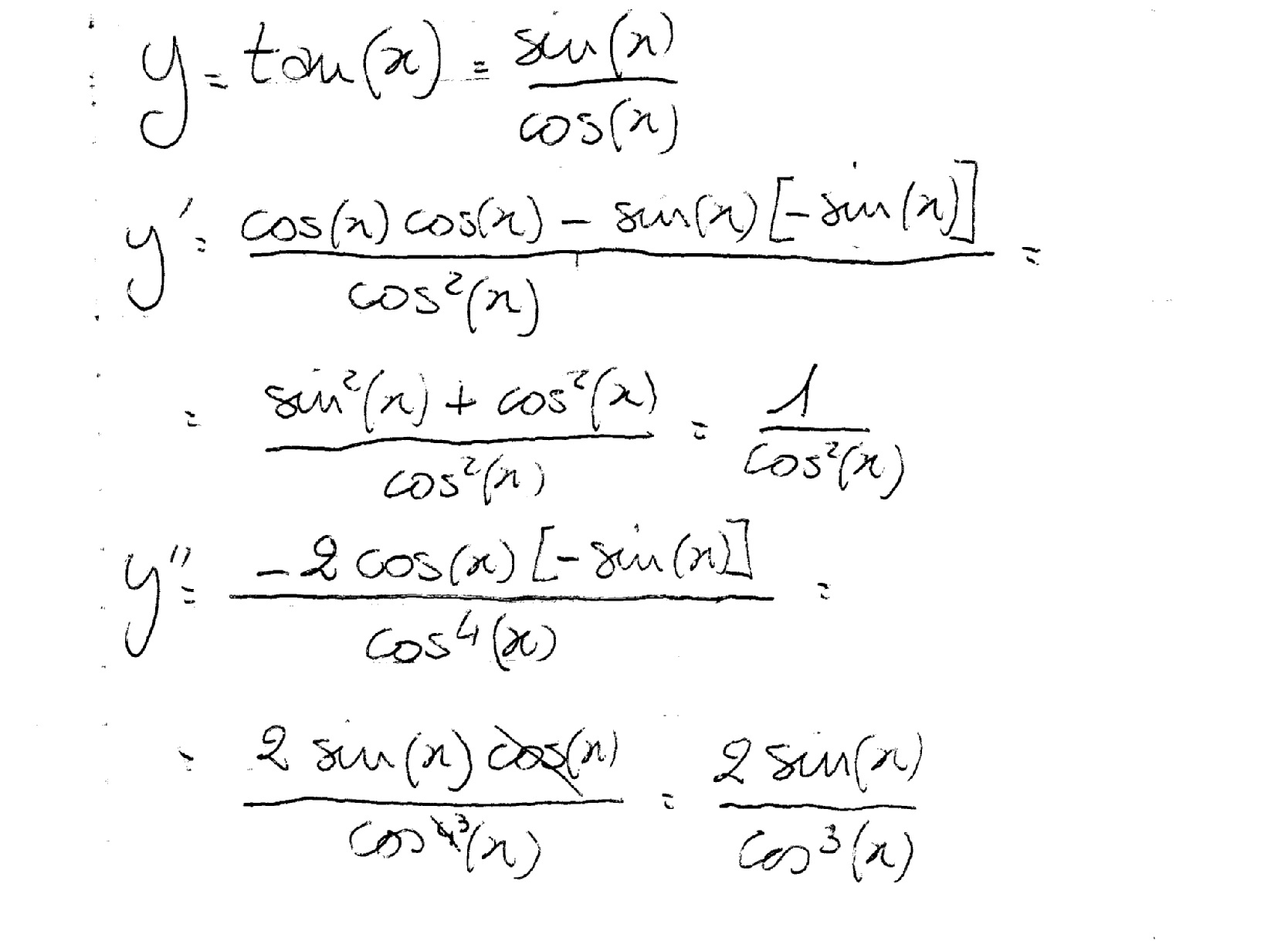
Derivative of Tangent Definition, equation, formula and more
Thus we have found the derivative of y = arcsin x, (6) d d x ( arcsin x) = 1 1 − x 2. Exercise 1. Use the same approach to determine the derivatives of y = arccos x, y = arctan x, and y = arccot x. Answer. Example 2: Finding the derivative of y = arcsec x. Find the derivative of y = arcsec x.
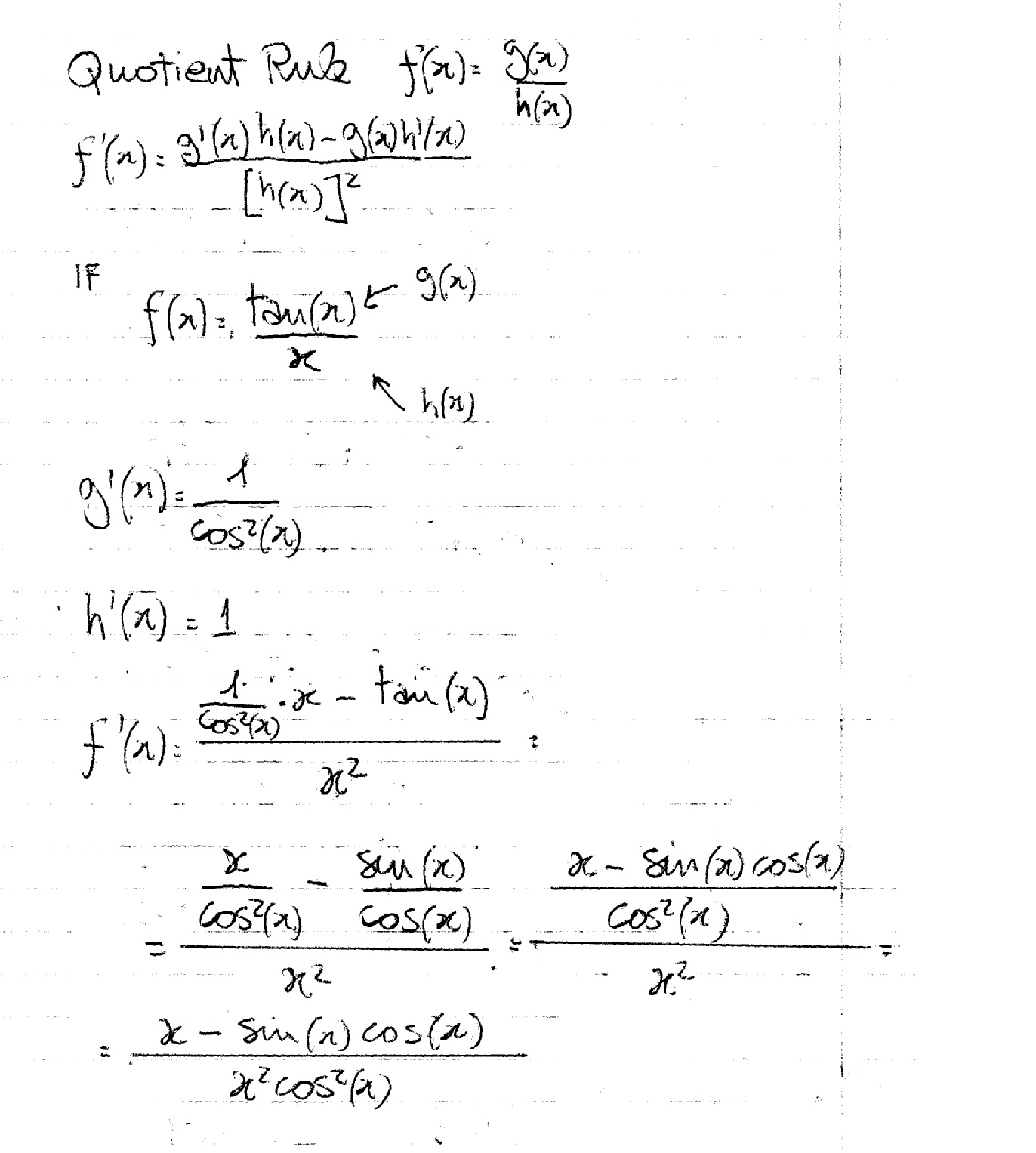
Derivative of Tangent x Formula, Rules, Examples
The differentiation of t a n − 1 x with respect to x is 1 1 + x 2. i.e. d d x t a n − 1 x = 1 1 + x 2. Proof using chain rule : Let y = t a n − 1 x. Then, t a n ( t a n − 1 x) = x tan y = x Differentiating both sides with respect to x, we get d d x (tan y) = d d x (x) d d x (tan y) = 1 By chain rule, s e c 2 y d y d x = 1 d y d x = 1 s e c 2 y

Second Derivative of tan^2x YouTube
Since tan y=x, the tan ratio opposite/adjacent tells you that your opposite side is x and adjacent side is 1. Now use pythagorean theorem to find the hypoteneuse, which is sqrt (x^2+1). Then form cos y= 1/sqrt (x^2+1) and sub. it back into the above formula, squaring it to give you 1/ (1+x^2). •.
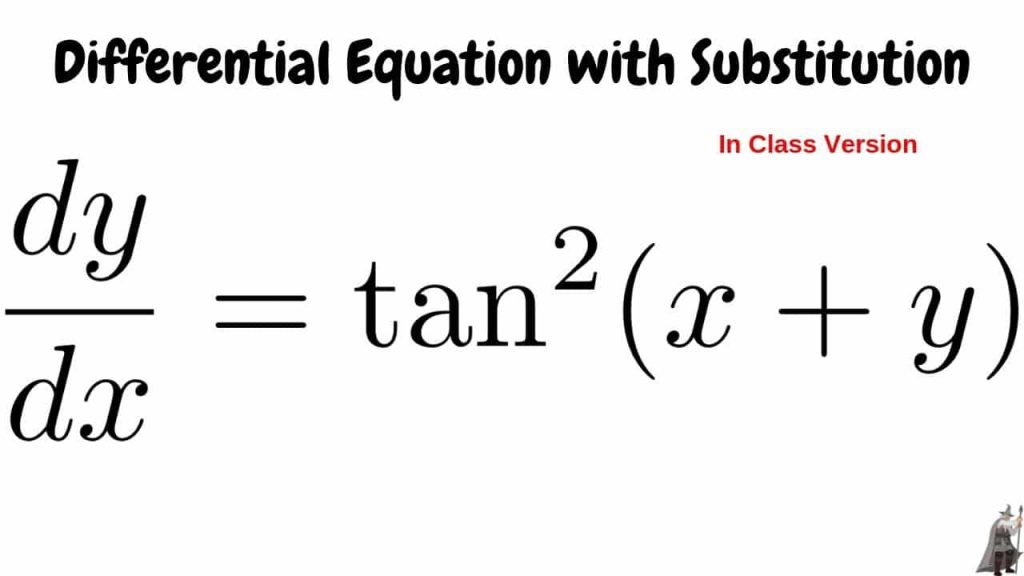
derivative of tanh Archives Get Education Bee
All derivatives of circular trigonometric functions can be found from those of sin ( x) and cos ( x) by means of the quotient rule applied to functions such as tan ( x) = sin ( x )/cos ( x ). Knowing these derivatives, the derivatives of the inverse trigonometric functions are found using implicit differentiation .
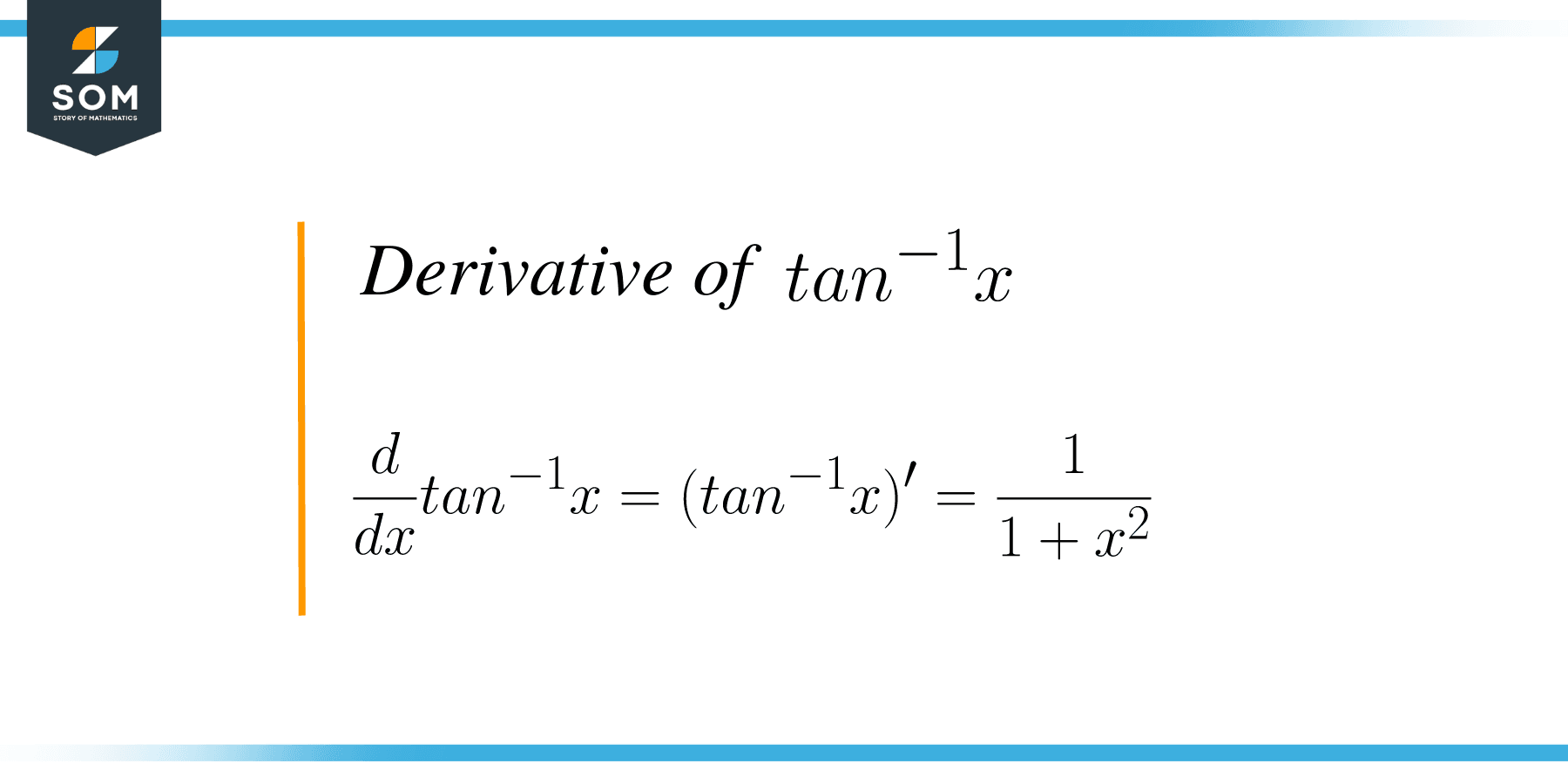
Derivative of Tan^1 x Detailed Explanation and Examples The Story of Mathematics A History
Explanation: u = tan−1( y x) This problem needs a slight prerequisite of chain rule, and quotient rule. du dx = 1 1 + (y x)2 y − xdy dx x2 = x2 y − xdy dx x2 + y2 Thus, d dx (tan−1( y x)) = x2 y − x dy dx x2 +y2 Answer link Ultrilliam Jul 6, 2018 It really depends upon what you are doing, and which independent variables matter to you.
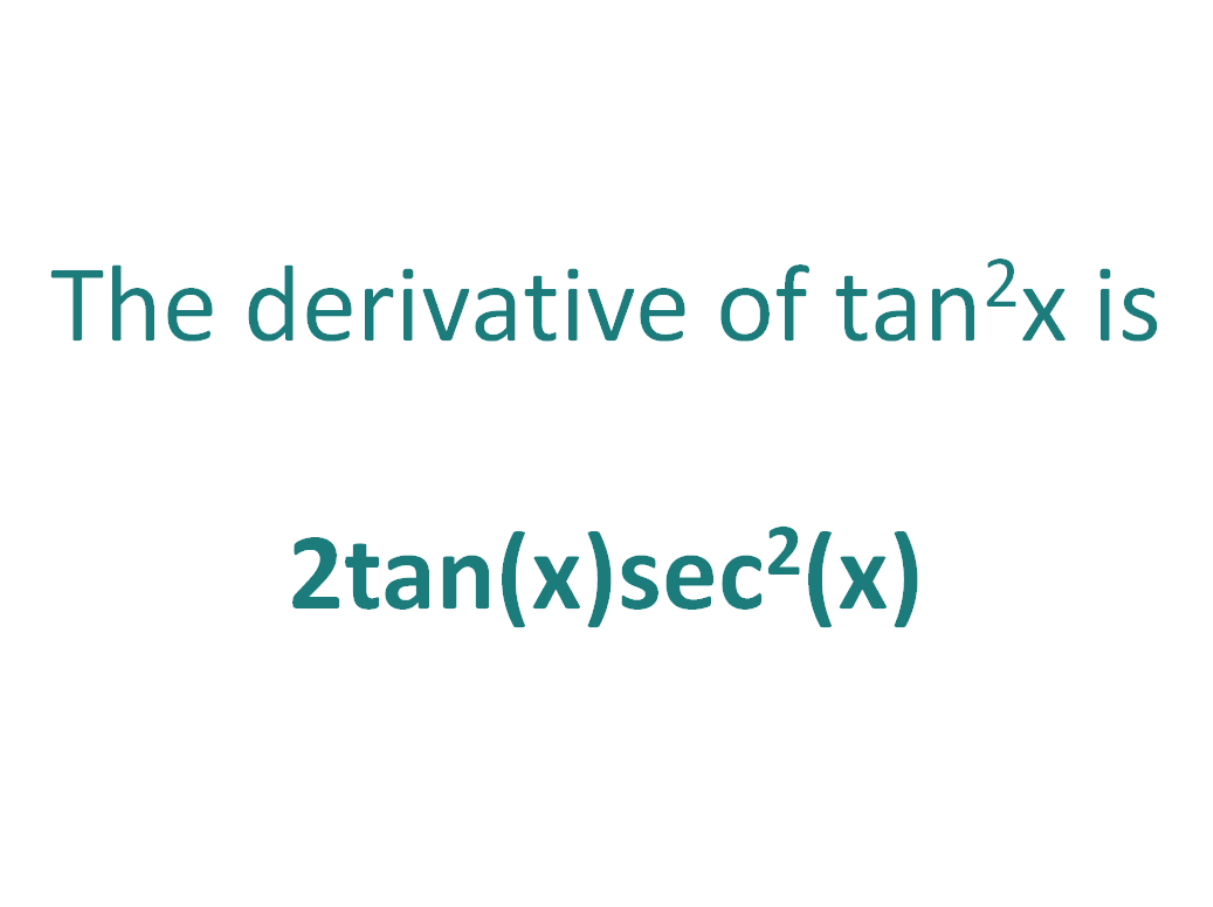
The Derivative of tan^2x DerivativeIt
[Math Processing Error] Answer link I'm assuming you are thinking of this as being a function of two independent variables x and y: z=tan^ {-1} (y/x). The answers are \frac {\partial z} {\partial x}=-\frac {y} {x^ {2}+y^ {2}} and \frac {\partial z} {\partial y}=\frac {x} {x^2+y^2}.

Differentiation of tan^2(x) and (x^3+x)^4 YouTube
1 Answer Jim H Aug 4, 2015 Use the derivative of tan−1 and the chain rule. Explanation: The derivative of tan−1x is 1 1 +x2 (for "why", see note below) So, applying the chain rule, we get: d dx (tan−1u) = 1 1 +u2 ⋅ du dx In this question u = 2x, so we get: d dx (tan−12x) = 1 1 +(2x)2 ⋅ d dx (2x) = 2 1 + 4x2 Note If y = tan−1x, then tany = x

Differentiation of (tanx)^2 YouTube
1 Answer Truong-Son N. Jul 1, 2015 I seem to recall my professor forgetting how to deriving this. This is what I showed him: y = arctanx tany = x sec2y dy dx = 1 dy dx = 1 sec2y Since tany = x 1 and √12 +x2 = √1 +x2, sec2y = ( √1 + x2 1)2 = 1 + x2 ⇒ dy dx = 1 1 + x2 I think he originally intended to do this: dy dx = 1 sec2y sec2y = 1 + tan2y

Q1 Differentiate tan^(1)(1/x) Differentiate Tan inverse 1 by x YouTube
The differentiation of the tan inverse function can be written in terms of any variable. Here are some of the examples to learn how to express the formula for the derivative of inverse tangent function in calculus. ( 1) d d y ( tan − 1 ( y)) = 1 1 + y 2 ( 2) d d l ( tan − 1 ( l)) = 1 1 + l 2 ( 3) d d z ( tan − 1 ( z)) = 1 1 + z 2 Proof